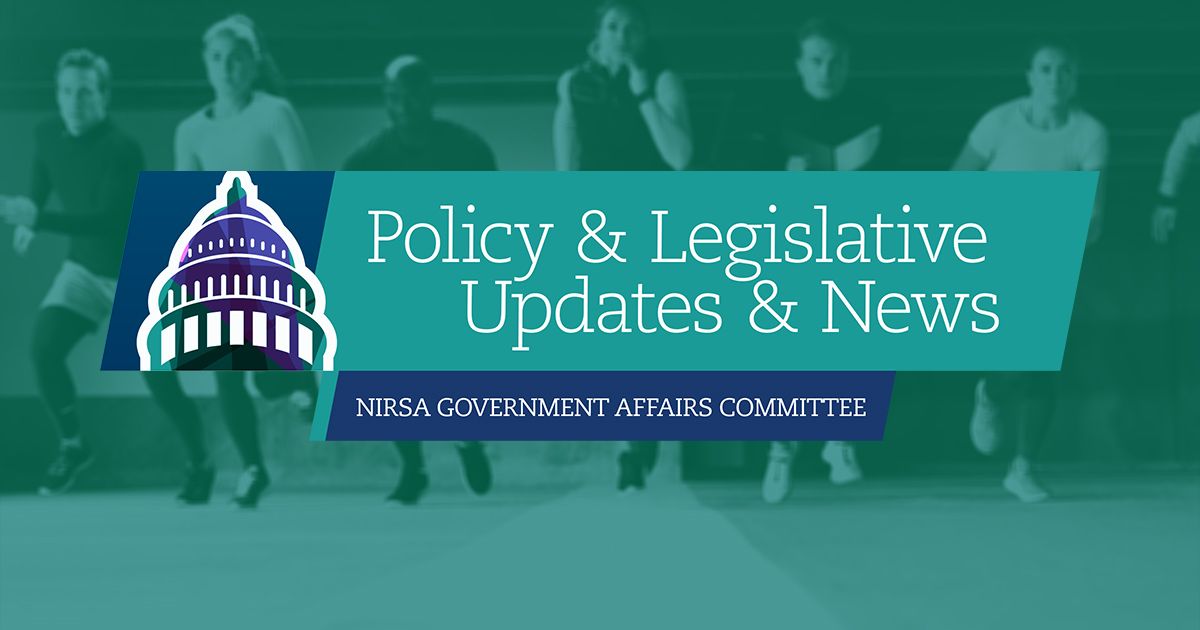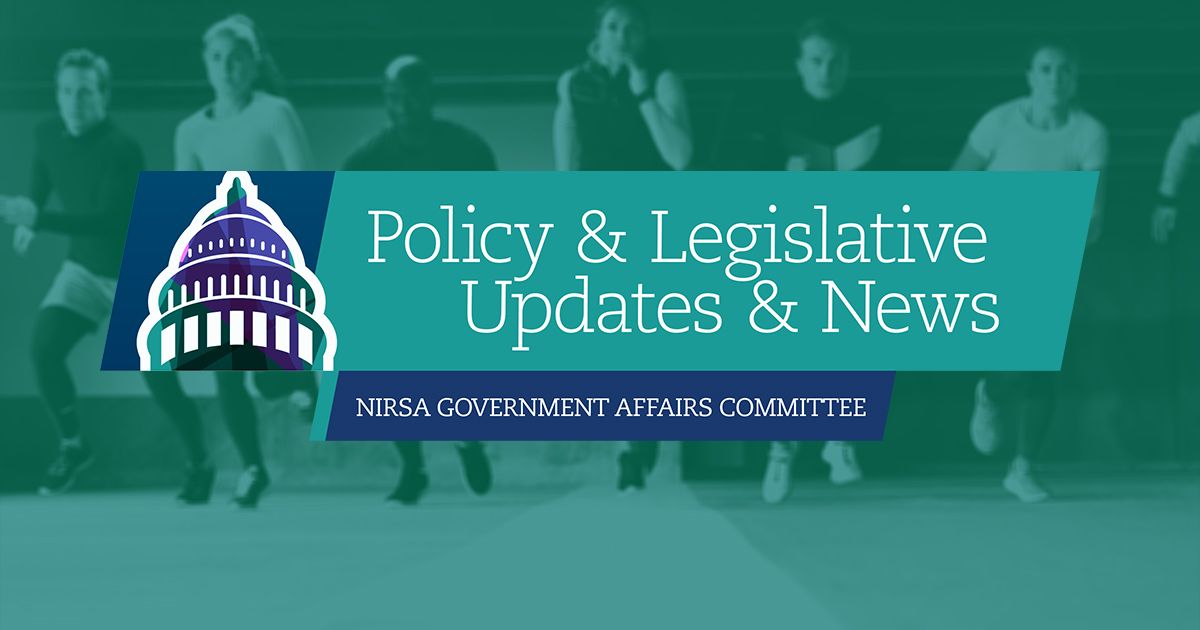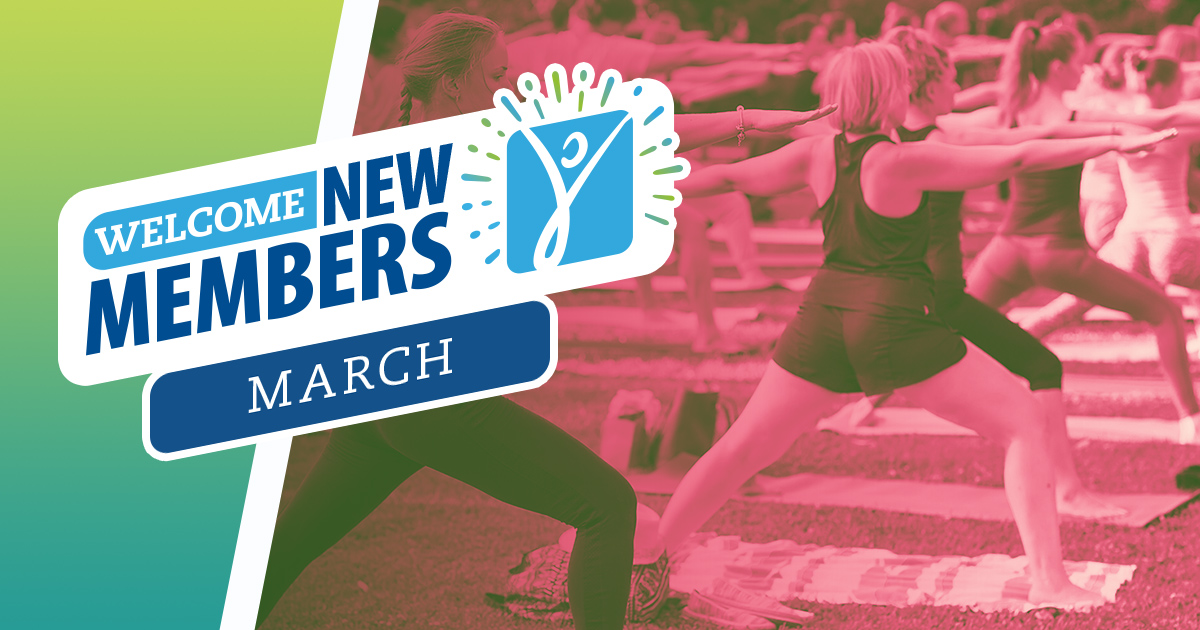The NIRSA Concussion Advisory Council has been working to develop a series concussion-focused resources, including case studies to give our campus recreation colleagues from across North America some insight into various approaches to implementing concussion protocols.
The University of Nebraska-Lincoln is pleased to share this entry in the series.
Background
As the second oldest athletic training department in collegiate recreation, the University of Nebraska Injury Prevention and Care (IPC) Department was developed in 1989 with one graduate assistant athletic trainer. As of 2019, it has three staff athletic trainers (two full-time and one graduate assistant), PRN athletic trainers for hockey, as well as 37 student staff certified in CPR for the Professional Rescuer, first aid, and who go through additional training through a ten-week course. The Injury Prevention and Care staff members provide medical coverage and first responder services for the two facilities (City Campus Recreation and the Recreation and Wellness Center) as well as at some of our high-risk events.
The University of Nebraska-Lincoln has a population of just over 25,000 students as well as 6,000 faculty and staff. Campus Recreation is student-fee funded so all students have access to facilities as well as to IPC. Faculty and staff with a campus recreation membership and people who have a guest pass also have access to IPC. The athletic trainers are available the majority of the hours our facilities are open for anyone to come in for an injury evaluation. Statistically, IPC gets about 10,000 visits a year—ranging from minor injuries to orthopedic, concussion, and EMS-activated emergencies.
In addition to our informal recreation participants, UNL also offers 70 intramural activities with two activities determined to be high risk (outdoor soccer and flag football). Intramurals has approximately 7,000 unique participants a year. UNL Campus Recreation also has 38 sport clubs with seven active high-risk clubs (men’s and women’s hockey, men’s rugby, men’s and women’s soccer, and men’s and women’s ultimate frisbee) per SportRisk’s Risk Grid.
Depending on availability, there is either a certified athletic trainer or a member of the IPC student staff present at all high-risk intramural and sport club home events. Low-risk intramural activities and sport clubs have either an intramural staff assistant, safety officer, or sport club supervisor present who is certified in CPR and first aid.
Developing our protocols
When I began working for IPC as a professional staff member in 2012, UNL Campus Recreation was adhering to the NATA Position Statement for Management of Sport Concussions but the department didn’t have its own policy in writing. I created a document including removal from play and a return to play progression that our IPC staff began utilizing. Athletic trainers met with a neuropsychologist at the UNL Center for Brain, Biology, and Behavior (CB3) and followed his recommendations.
The neuropsychologist was looking for more athletes for his research so he offered voluntary baseline testing utilizing ImPact and BESS testing for the high-risk sport club athletes. The policy included a removal from play if a concussion was suspected as well as a referral to a physician at the University Health Center. A referral to the Services for Students with Disabilities Office was to be given for academic accommodations. An informational card was developed to be issued to patrons who demonstrated signs or symptoms of concussion. Currently, our participants do not participate in baseline testing as we were advised by the neuropsychologist that baseline tests offer limited additional value over using normative data for post-injury comparison.
A return to play protocol was implemented for sport club athletes as well. The athletic trainers perform a six-phase stepwise progression back to activity after the athlete is asymptomatic.
| Table 4. Return-to-Play Progression | |
|---|---|
| Stagea | Physical Activity |
| 1 | No activity |
| 2 | Light exercise: <70% age-predicted heart rate |
| 3 | Sport-specific activities without the threat of contact from others |
| 4 | Noncontact training involving others, resistance training |
| 5 | Unrestricted training |
| 6 | Return to play |
| a Stages should be separated by at least 24 hours.7 | |
In the state of Nebraska, per Legislative Bill 260, athletic trainers can return athletes to play from concussion; however, since IPC athletic trainers and student staff are not at every practice and game, IPC staff refer anyone suspected of having a concussion to a physician for medical clearance.
Refining our protocols
UNL’s concussion policies were updated again during a major overhaul of the risk management master plan during the 2016-17 academic year. At this time, the certified athletic trainers on staff switched to using the Standard Concussion Assessment Tool 5 (SCAT 5), and the department adopted the use of the Concussion Recognition Tool 5 (CRT5) by other staff members. While the SCAT5 is to only be used by healthcare professionals, the CRT5 is designed to be used by laypeople to recognize when it is appropriate to refer someone with a suspected concussion for evaluation by a medical professional. All supervisory positions in intramurals, sport clubs, and youth activities are trained to use the CRT5. Going forward, the CRT5 forms will also be available to operations and aquatics personnel.
In the 2017–2018 academic year, our Risk Management Committee created a subcommittee to revisit our concussion management policy and protocols once again. One area of interest we felt needed to be addressed was concussion education for our campus recreation staff and participants. Currently, we use SportsRisk concussion videos as part of our overall risk management plan. By including these training videos into our risk management training, we can ensure that our staff is getting up-to-date information. We can also assess the knowledge of our staff and participants through online quizzes, and document who has completed the training through the integrated tracking function.
Lessons learned
There are a few issues any institutional policymakers should consider when developing concussion protocols, including in which programs to focus concussion management efforts, what to do about participants in academic classes that involve physical activity, and how to keep up with the ever-changing landscape of concussion management.
Does your department offer programming for youth? Do you have a concussion management plain in place for your youth programs? While most concussion management efforts are aimed at sports club athletes (and sometimes intramural sports participants), it’s important to not overlook youth activities. Most states have concussion laws for minors, so it’s imperative to have the necessary protocols in place to ensure these participants receive proper care.
Another issue to consider is how best to accommodate students enrolled in academic courses (that take place in your facility) which require physical activity. Should they not be allowed to participate if they sustain a concussion or is there an alternative assignment that fits into their return to learn plan?
Finally, as with any policy or procedure, this document must be updated frequently as concussion research continues to change. We are fortunate to have athletic trainers on staff and a Risk Management Committee that meets regularly to update these policies in the interest of providing a safe environment for our participants. If your department does not have athletic trainers, you may need to consult with other campus healthcare providers to help ensure your policies and protocols are in line with the most current research and best practices.
Learn more
Learn more about concussion protocols at NIRSA 2019 during the session “Concussions Management: What Do We Do?” The session will be held Monday, February 18, from 9:15am-10:15am in room 312. Hosted by Jason Linsenmeyer, PhD, of Oklahoma State University and Christopher Schmoldt of Florida State University, you can come learn two different approaches to partnering with your university health center to better manage concussions in your program. This session will cover ways to manage concussions with athletic trainers or student supervisors present.
For more information, contact NIRSA Headquarters.
Jennifer Krueger, ATC, is currently the Injury Prevention & Care Coordinator at the University of Nebraska-Lincoln; you can reach her at jkrueger7@unl.edu.






